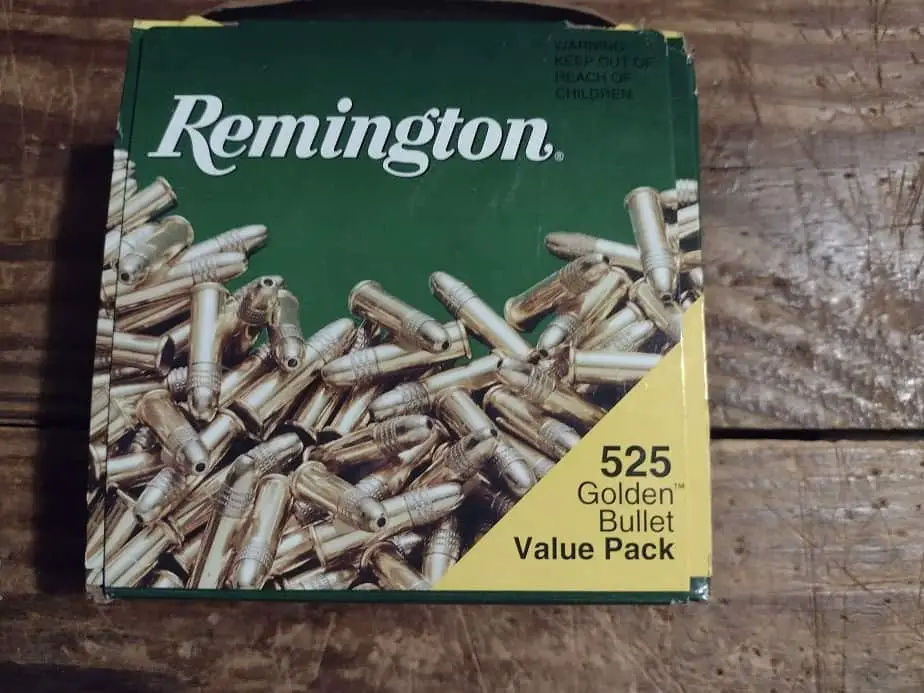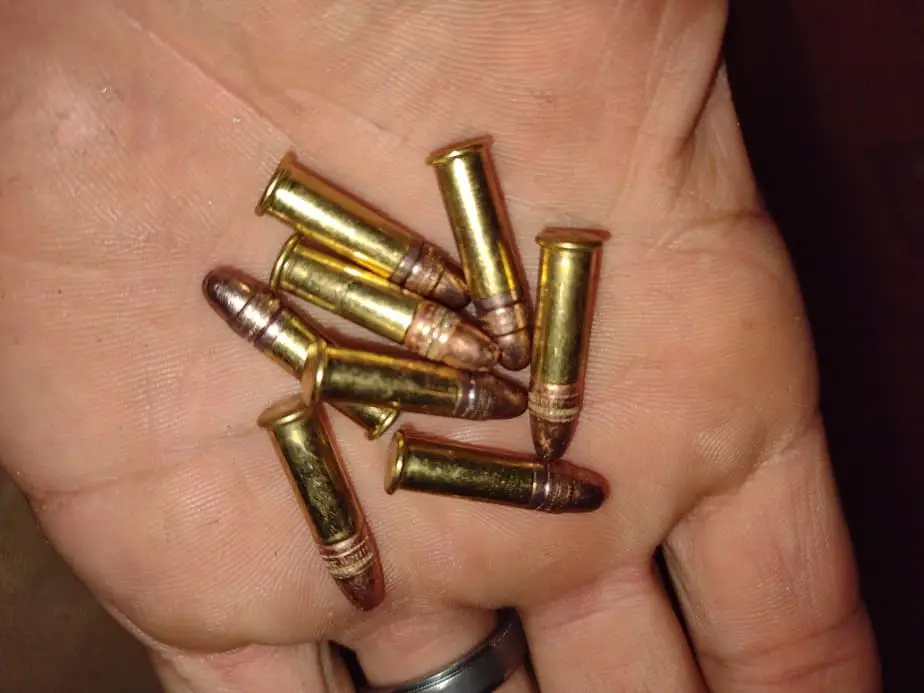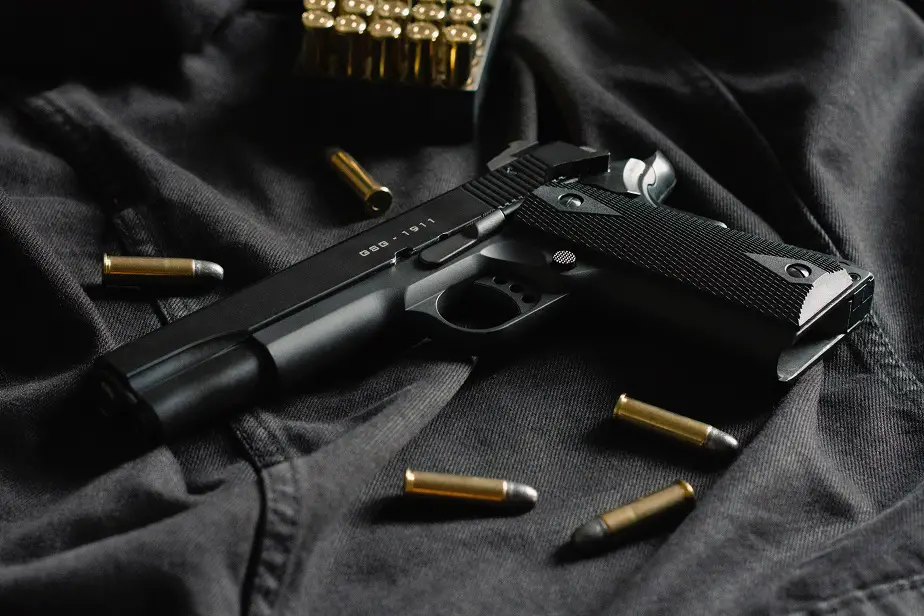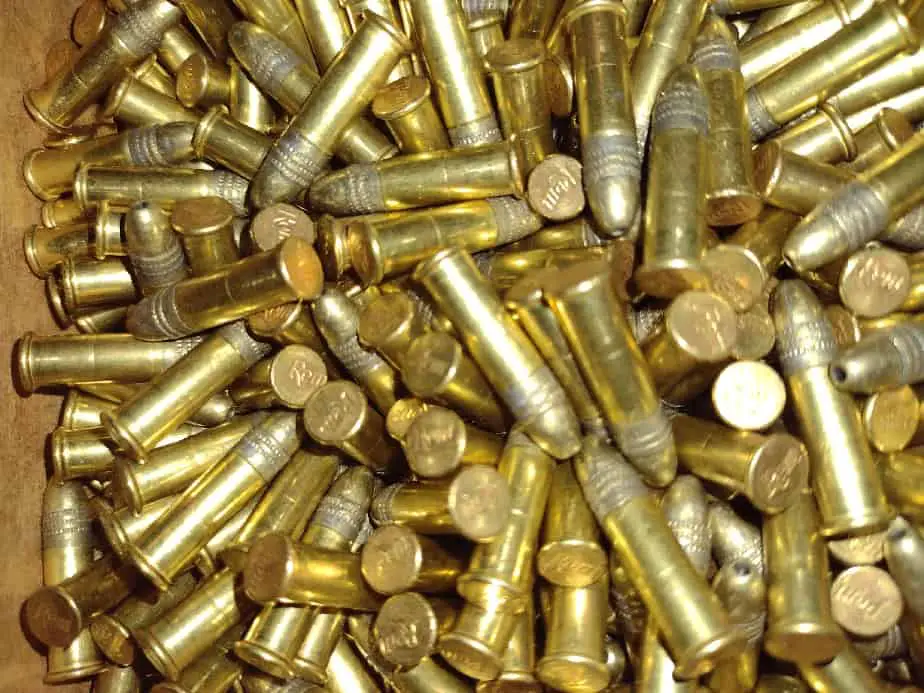The 22lr. is my favorite and most used caliber in both pistols and rifles. As always, I’ve researched it to see just what the little bullet is and what it isn’t.
The 22lr. can kill a human at over 400 yards, but it’s considerably underpowered for use against a human target. Crime reports show it’s not often effective against humans. The small bullet and low velocity usually fail to cause a devastating wound. Most will victims recover from a 22lr. gunshot.
Whether you are considering using a 22 for self-defense, or you just want to know how deadly it is, this article will explain it all.
Click Here to check out reliable 22lr uppers for your AR.

How Deadly is the 22lr?
The 22lr is less deadly than all larger calibers. It can certainly be deadly, but more deaths have come from a 38 revolver and a 9mm pistol than from 22lr.
The 22lr. is certainly a small bullet. It’s also fairly slow. With all calibers, there is a huge variation in bullet construction and in the amount of energy in the round. Not all bullets are created equal. Within the same caliber, some bullets are more effective than others. I’ll start by focusing on the most common.
The standard 22lr bullet is a 40 grain, round noised lead bullet that has a velocity of around 1150 fps, out of a rifle. That bullet is a horrible choice for making a wound in a person. Although it may penetrate 12 inches in ballistic gel, it will not expand and will make a very small wound channel.
The lethality of bullets is measured by how much tissue they damage in a body. There are two things that really dictate how much tissue damage will take place. They are velocity and the diameter of the bullet. Basically, it’s a question of how quickly a bullet wound will cause a person to bleed out, or if it will at all.
The 22lr is under a quarter of an inch in diameter and usually does not expand as some bullets do. The wound resulting from an unexpanded 22lr bullet is considered by surgeons to be a puncture wound unless the bullet structure failed (broke apart) in a body.
Just like with most any bullet, it’s only deadly if it hits either the central nervous system (brain or brainstem) or a primary part of the circulatory system, i.e. heart or artery. Interestingly, those are the least hit spots, according to reports on gunshot victims.
In essence, the 22lr is something like eight to ten times less lethal than a 9mm hollow point. That’s figuring in the much larger amount of damaged tissue.
However, studies have repeatedly shown that it’s still fairly effective for a self-defense situation.
I have recommended some people convert their 223 AR to a 22lr for small game hunting and cheap target practice. Bear Creek Arsenal has some great options for that. Let me give you a link to them. Shoot 22lr in Your AR with this cheap upper
Also check out their 22 Magnum uppers Shoot 22 Magnum in your AR with these cheap uppers

How Many People Have Died from 22lr?
Well, I don’t really have good numbers for this. I’ve heard for years that the deadliest caliber is the 22lr and that it has killed more people than any other cartridge. What I can tell you is that that’s not true. I’ve been pouring over crime report data, and it really didn’t tell me much.
The only good report I got from the FBI was dealing with calibers associated with criminal-related police officer deaths. I mean; it’s something, but it’s skewed. Not that I don’t trust the FBI on the matter, but for the fact that criminals have always preferred more powerful guns than the general public does.
A report on police officers being shot will show less use of little bullets like the 22lr. still, it’s something. But I dug deeper. I talked with a man who worked at his county morgue for almost 40 years. Him being a gun enthusiast, kept note of the gunshots he’d seen. It was really interesting.
Both the police shootings report, and the mortician, show near the same results. The FBI report on officers killed by gunshot listed the 22lr in 3.5 percent of instances. My acquaintance in the industry said that in his experience about 3 out of 100 fatal gunshot victims were shot with a 22lr.
The mortician said that the 38. handgun Used to be almost every time until the mid to late ’90s, then it switched to the 9mm. That’s pretty much the same I saw in the FBI report, so I guess they’re probably closer than I thought.
The 22lr is pretty much the benchmark for the lowest level of body armor, level 1. Basically, all armor will stop a 22lr. Most armor is a level 2, but I’m a little more serious and go for level 3.

How Powerful is a 22lr?
The 22lr has between 90 and 203 foot-pounds of energy at the muzzle. The most powerful is the CCI Velocitor and the Aguilla Interceptors. They are between 182 and 203 foot-pounds at the muzzle. Most 22 ammo will shoot a bullet with around 120 foot-pounds of energy.
Now, that falls off with distance, as the bullet slows down. The 22 isn’t really designed with long-range marksmanship in mind so it loses velocity somewhat abruptly. At 100 yards, the fast ones have gone down to 105-foot pounds. The slower ones have about 50 foot-pounds.
In terms of power, the 22lr is the bottom of the barrel. Hunters consider it too small for use against anything smaller than a raccoon. It’s illegal to hunt deer with a 22lr because it doesn’t usually kill them and it’s considered too inhumane. And that’s if it’s in a rifle.
In a pistol with a 6-inch barrel, results are usually 30 percent less than in a rifle. The most common 22lr pistols have a two-inch barrel. In a two-inch barrel, you can expect 60 percent less power than published data for the bullets. It gets pretty wimpy awful fast.
Is the 22lr an Effective Manstopper?
The 22lr is effective at ending most violent altercations but is not effective in causing incapacitating wounds. 22lr gunshot wounds are not likely to cause incapacitation due to the small diameter and low velocity of the round. Lethality is largely based on the crush channel surface area and temporary stretch cavity, and 22lr has little of both.
The 22lr has been chambered in a few defensive firearms, but it’s by far a poor choice. Some while ago, I read a report from a city police department. They reported their findings on how effective different calibers were for ones-shot stops, in other words, one shot immediately ended or deterred the bad guy.
The results for the humble 22 showed about a 10 percent success rate, as opposed to 38 percent with the 9mm. So, in this study, a shot on target with a 22 is only immediately effective in 1 out of 10 tries. That’s not a very successful result.
For the record, the stats do vary widely depending on how they were gathered, but all the research and reports do show a higher functionality of calibers larger than 22lr for a defensive weapon. Bigger guns tend to work better, to a point.
We’re talking about the ability of one shot on target to do the trick. In some instances, you may only have time for one or two shots. Add to that the fact that the accuracy of a trained marksman decreases by 70 percent in a defensive shooting.
The 22 may fail to penetrate tough bones and may even fail to penetrate a skull at close ranges. I’ve seen it happen with 22lr pistols.
On a different note, here’s a pretty good video by Paul Harrel, a firearms expert, that shows some interesting wounding capabilities of 22lr.
Other studies show that a standard duty pistol (9mm, 45acp) is about 40 to 50 percent more lethal than a 22lr rifle or pistol. There was a famous study a few years back from Baltimore that reported more likelihood of death as caliber and power were increased. Some folks actually found it shocking. It also had some interesting statistics.
The study is called “The Association of Firearm Caliber With Likelihood of Death From Gunshot Injury in Criminal Assaults”. Here’s a link to it.
One of the things found in the study is that there was no discernable difference in accuracy or number of hits on target between the smaller and larger calibers.
The study of Baltimore criminal and non-police-involved shootings actually concluded that “simply replacing larger-caliber guns with small-caliber guns with no change in location or number of wounds would have reduced the gun homicide rate by 39.5%.”
Honestly, the 22 is a fairly ineffective tool as a “man stopper”. It’s literally the smallest gun you can get. It serves as a good rabbit or squirrel gun, but a horrible self-defense option given more powerful choices.
How Far Away Will a 22lr. Kill a Person?
A 22lr can be lethal past 450-yards under the right circumstances. At that point, the chances of lethality are slim. The bullet would have to strike a very thin part of a skull or penetrate a shallow major vein or artery.
This part gets into much conjecture. What is the lowest limit that a bullet could still kill a person? Depends. Depends on the bullet, where it hits, how big a person is, what angle the shot is. As I said, it depends. But I still have some real-world info for you. It’s your reward for reading this far.
Sometime during the Vietnam war, the US army developed a standard to test a bullet for its maximum possible killing range. That’s not to be confused with maximum effective range. The test was a simple penetration test on a 1/w inch pine board.
The theory behind it was, if it can penetrate the board, it can wound a person, and any wound could potentially be deadly. With standard velocity ammunition (1170 fps) the 22lr will pass the board test at up to 440 yards. so, there’s that.
However realistically speaking, 400 yards is about the max limit in this dude’s personal opinion.

